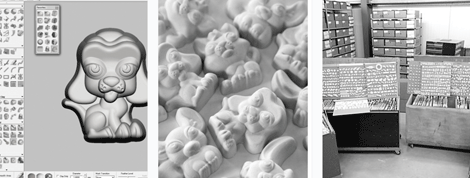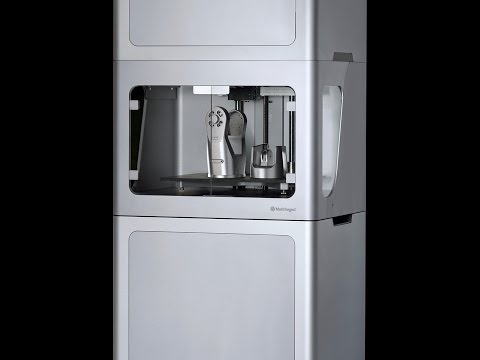
From 3D model, to die, vast arrays of sweet types can be created, shared and stored digitally
Sweets, candies, bob-bon, snoep, dolce, dulce, gula-gula, mithai – whatever you call them, sweets are wonderful things that have hardly changed in hundreds of years.
However, with the masses of digital design tools around, creativity for making the moulds for these delicious delights has just been unleashed to another level using virtual clay-modeling from Geomagic Freeform.
The traditional process is over 70 years old, credited to Hans Riegel, the founder of the German candy company Haribo, and the Mogul automation machine.
First the design is carved into a shape (a die) and glued to a wooden frame alongside other carved designs.
These shapes are pressed into a tray of starch to make molds into which the candy material can be poured or injected before congealing or hardening. The starch pulls away easily, and the candies are either ready to go or can be coated with sugar or glazed.
In its basic form, this process can easily be carried out in your own kitchen. The Mogul machine automates this process by lining the starch sheets on a conveyor belt and pressing the stamps into the starch 20 – 30 times a minute, before they are filled with candy.
Dutch sweet die manufacturers Deltaform has long searched for a more automated process over its 65 year history, and now feels it has found the future of sweet die design.
“Three years ago, 90 per cent of our cuts were made by hand. Now 90 per cent of our cuts are made with Geomagic Freeform and CNC.” says Nils Dogger, Deltavorm’s owner and CEO.
Dogger invested in a 3D scanner from 3-Shape, as well as SolidWorks CAD software.
After scanning in the 16,000 hand-sculpted designs in the Deltavorm archive (300 different bears alone), the data could be fed into a CAM software package for milling.
//www.youtube.com/embed/OvMlpUMb72Q?rel=0
A good starting point for automation, editing the scanned designs often proved to be time consuming and frustrating to the point that the team almost preferred to go ahead and hand carve the new design to incorporate the customer’s changes rather than adapt the scan.
No time was being saved, and Deltavorm still needed a better modeling tool for its designers, hence its adaption of Freeform.
Modellers could make direct edits in a hands-on fashion, or even create new designs with its virtual clay modelling.
“The biggest benefits Geomagic Freeform has delivered to Deltavorm have been the notable increase in the quality of our designs and our ability to work much more closely with our customers,” said Dogger.
“Now we can create more design variations to meet our customers’ needs and help them create their products more efficiently with better design-to-layout solutions.
“When you have such small, detailed designs, following a customer’s feedback to make them 5 per cent smaller is very difficult to do by hand. Now with Geomagic Freeform, it’s an easy and precise process that takes little to no time.”






